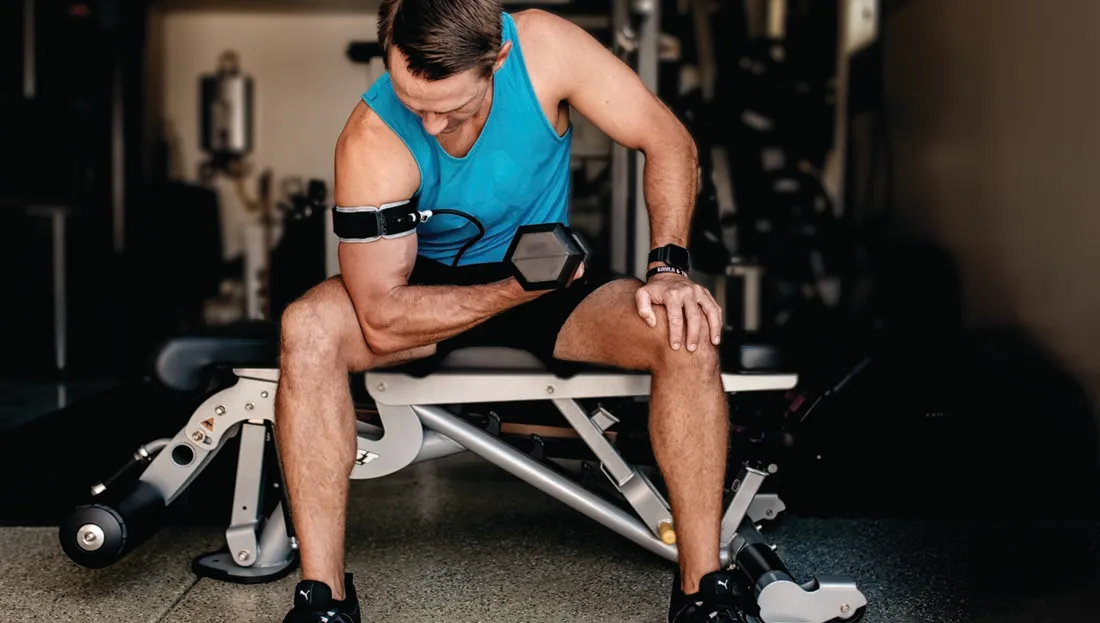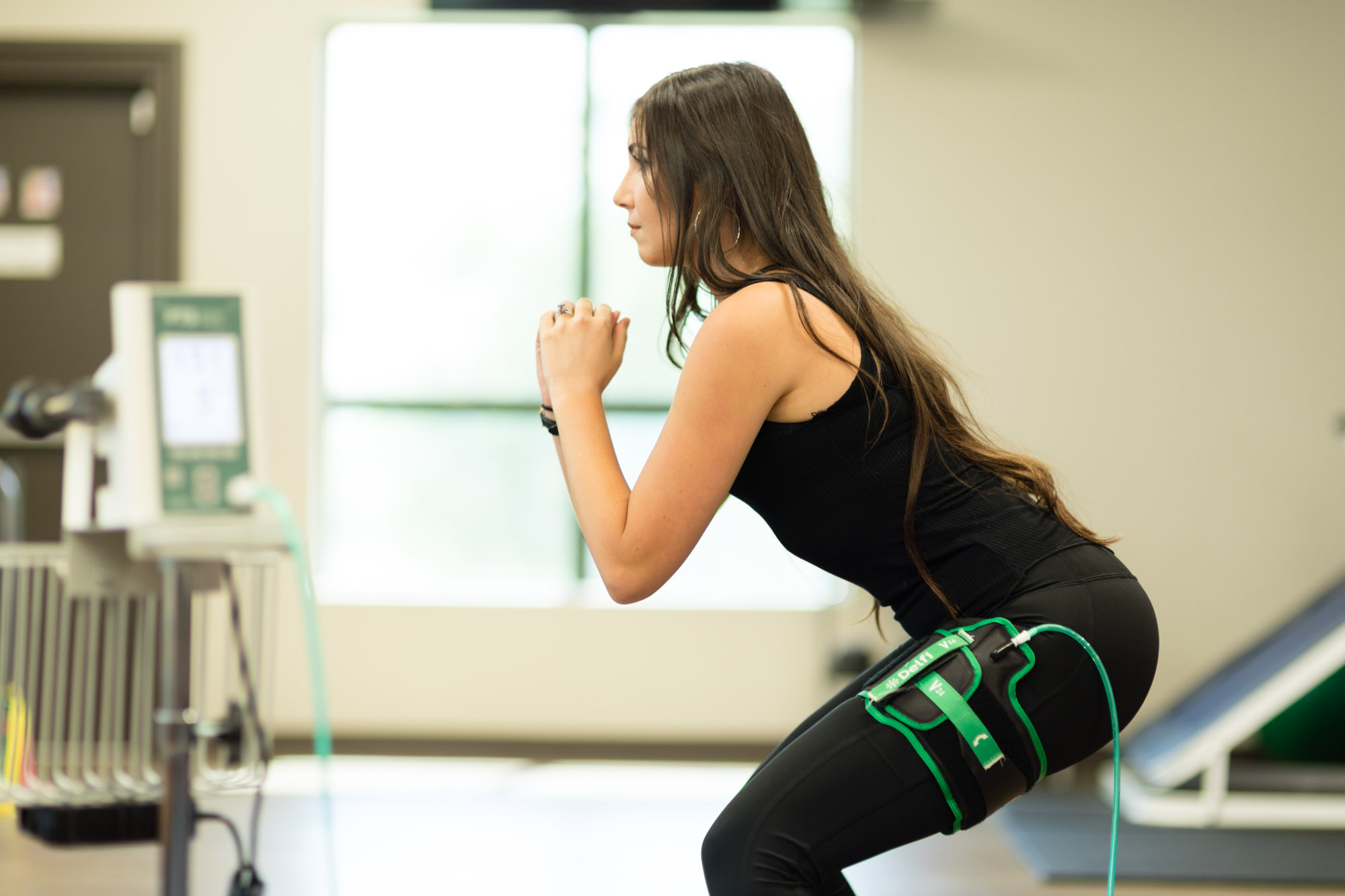Is it time to restrict Blood Flow Restriction training?
Mar 22, 2025
a 7-min read
Recently I got accused of being closed-minded and ignorant when I questioned the utility and effectiveness of blood flow restriction training (BFRT). That’s ok, I’m used to being attacked by those with vested interests and biases for questioning the interventions they promote.
But for the last few years, there has been a steady increase in the promotion and claims made about BFRT, so I think it's time for some balance. Personally, I don’t think BFRT offers that much to many people and I also think it’s getting ahead of itself in its claims of effectiveness.
Now, before you call me ignorant let me tell you I have used BFRT many, many times, both on myself and my patients, athletes and general populations alike. Mostly for lower limb issues like ACL and meniscal surgical repairs, knee OA, knee replacements, hamstring strains and other general lower limb issues.
And it did something, but if I’m being honest, I don’t think it added that much more or moved things on that much faster than a good standard progressive rehab program would do.
Using BFRT also has extra costs. Yes, ok the basic bands and tourniquets don’t cost that much, but they are not accurate or reliable to know if you have achieved the right pressures and occlusions needed to sufficiently restrict blood flow to get the desired results.
The more accurate and reliable BFRT devices that can set the pressures more accurately do cost a lot more, and more importantly, take up more time to set up correctly in already time-limited sessions with patients.
And so, a good few years ago I stopped using BFRT and found no negative downsides, in fact just the opposite.
SO WHAT DOES BFRT DO?
BFRT as the name implies partially restricts blood flow in and out of your limbs during exercise. By limiting blood flow it creates a cellular and metabolic environment in your tissues very similar to high-intensity training (ref). This is then said to help promote physiological responses leading to muscle growth and strength without the need to do heavy lifting (ref).
Sounds great right? All the gainz without the pains!
Well not so fast, because to get those physiological responses with BFRT and lighter loads you need to do much higher volumes of work, over much longer time periods.
The most common BFRT protocol involves using loads of around 20-30% of 1RM. The first set is done for 30 reps, followed by 4 sets of 15 reps, with 60 seconds of rest in between. The cuff pressure is set between 60-80% of the limbs' occlusion pressure.

This on average takes most people around 8-10 minutes to complete, and anyone who has done this will tell you it doesn’t just tickle, in fact doing BFRT is a downright unpleasant and painful 10 minutes of your life.
IS BFRT BEST FOR PAIN?
And that leads me nicely to the first point that many make to promote BFRT, which is it is most effective for those who can’t tolerate heavier loads due to pain.
Well just because BFRT uses light loads this doesn’t mean it's without pain.
As I’ve already said when BFRT is done properly it's often very painful even with the lightest of loads… and anyone who says it isn’t hasn’t done BFRT properly!
It seems hypocritical to say BFRT is best used on those who can’t tolerate pain with heavier loads but then go on to inflict just as much pain if not more with BFRT and lighter loads.
Personally, after experiencing BFRT, I would much rather do 3-5 sets of moderately painful exercises that take around 45-60 seconds per set to do with a moderate load and have some pain-free rest periods in-between, than do BFRT that incrementally hurts more and more over 10 mins consistently.
Now the counter-argument some have made here is that BFRT is actually a good and useful treatment for increasing someone’s pain tolerance when exercising by exposing them to higher levels of pain during exercise.
But my response here is why not just expose them to the pain without the BFRT then? Especially as exposure training for pain during exercise is highly contextual (ref).
Just because someone has pain bending their knee under load when using their stairs, using a BFR device in rehab may not make them more confident or tolerant to pain when bending their knee when using the stairs without a BFR device on.
And that’s what the current research is also showing. A recent systematic review of BFRT against traditional resistance-based training for those with knee OA finds that adding BFRT does not reduce pain, increase strength or improve function more (ref).
IS BFRT BEST FOR MUSCLE HYPERTROPHY AND STRENGTH?
Now the other point advocates of BFRT make is that it's more beneficial and safer for those whose tissues cannot tolerate heavier loads like after ACL surgery to protect the graft repair and that it helps prevent muscle atrophy and strength loss in the early stages better (ref).
Well, that sounds like a very reasonable and rational reason for using BFRT, but yet again it's just not that simple. A recent trial on 48 male and female athletes after surgical repair of an ACL rupture found that the use of BFRT did NOT improve muscle strength or function any better than a standard progressive rehab program (ref).
And there were also no differences in adverse effects either showing that the use of BFRT is not any more safer than standard rehab with slightly heavier loads.
So, all in all, I think BFRT is on some very shaky ground.
It doesn’t seem to improve muscle strength, function, or reduce pain any better than sensible progressive standard rehab. It also costs more, takes up more time, and can hurt more to use.

IS BFRT SEXY?
But I get it… gadgets are sexy and they have greater appeal and buy-in from some people.
BFRT can give the illusion of superiority, specificity, and specialism where there actually is very little, and for some that may be important and necessary to get results and outcomes. Especially in the high-pressure yet insecure world of professional sports where being seen to do things for ‘gaining the edge’ or getting a 0.1% advantage is important.
In conclusion, I don’t think based on my own experiences and the growing evidence base that BFRT has any real utility or effectiveness for most people in most rehab circumstances over and above good sensible progressive rehab.
However, I am open to changing my mind if and when new evidence emerges.
Thanks for reading
And remember you can’t go wrong getting strong... with or without BFRT!
Adam
Stay connected with new blogs and updates!
Join my mailing list to receive the latest blogs and updates.
Don't worry, your information will not be shared.
I hate SPAM, so I promise I will never sell your information to any third party trying to sell you laser guided acupuncture needles or some other BS.

